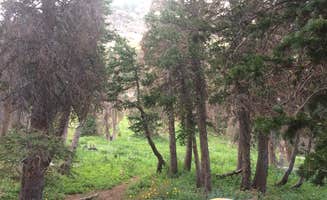Best Campgrounds in Colorado
Colorado encompasses a wide spectrum of camping experiences, from remote dispersed sites on Bureau of Land Management land to well-developed facilities in national parks. Several prominent campgrounds such as Mesa Verde National Park's Morefield Campground and Rocky Mountain National Park's Moraine Park Campground provide established amenities for tent and RV campers. The state's public lands support diverse accommodation types, with many locations like Mueller State Park offering both traditional campground options and cabin rentals. Black Canyon Dispersed Camping represents numerous primitive camping opportunities on public land throughout the region, where campers can experience more solitude away from developed campground settings.
Seasonal considerations vary dramatically across Colorado's diverse elevations. Many campgrounds like Saddlehorn in Colorado National Monument operate only from spring through fall (March to October), while others such as Chatfield State Park remain accessible year-round. Road conditions in dispersed camping areas can present challenges, particularly after rain or snow events. Permits and reservations are essential at most developed campgrounds, especially during peak summer months when popular sites fill quickly. Visitors should be prepared for significant temperature variations, even during summer months, particularly at higher elevations where overnight temperatures can drop considerably. A camper noted, "Lots of dispersed camping throughout this area. At this spot we found a nice area for a tent that had a fire pit."
Several visitors highlight the appeal of waterside locations, with creek and riverside sites receiving particularly positive reviews. Campers frequently mention the combination of natural settings and basic amenities as key factors in their satisfaction. Campgrounds with electrical hookups like Moraine Park provide a middle ground between rustic and comfortable camping experiences. Public lands offer the greatest flexibility for those seeking solitude, though they typically lack facilities like running water or maintained restrooms. Primitive sites on BLM land provide cost-effective alternatives to developed campgrounds, with one reviewer stating they "Got lucky and found a perfect site right by the creek with a fire ring. Easy to get to in our camper van, no 4 x 4 required." Mixed-use campgrounds that accommodate both tent and RV camping represent the majority of established options throughout the state.













